*NURSING > EXAM > Strayer University - HIST 105 US History II UNIT 2 CHALLENGE 1 Question And Answers (All)
Strayer University - HIST 105 US History II UNIT 2 CHALLENGE 1 Question And Answers
Document Content and Description Below
US History II UNIT 2 CHALLENGE 1 HIST 105 US History II UNIT 2 CHALLENGE 1: American Imperialism and Progressivism: 1890-1920 During the 1890s, American commercial interests wanted to increase... their access to international markets. American intellectuals took an interest in foreign lands and envisioned an American empire. In addition, what other factor changed American foreign policy in the 1890s? a.) The need to attract more workers to the United States motivated politicians to spread America's diplomatic presence in the world. b.) The ideology of the “white man’s burden” discouraged people from providing assistance to non-white populations. c.) Historians and naval strategists vehemently opposed all aspects of American imperialism. d.) Missionaries wanted to spread American democratic and Christian influence around the world. During the 1890s, American businesses increased their investments in foreign markets, which made foreign affairs more important to their success. The creation of new and stronger international ties led to new markets for exports and better prices on raw materials. In addition, what other two factors changed American foreign policy in the 1890s? a.) 1) Missionaries worked to increase the influence of Christianity and American democracy around the world. 2) A worldwide movement toward decolonization and free and independent markets surged in popularity. b.) 1) A rise in nativism in the United States urged the closing of America's borders to immigrants and to trade with foreign countries. 2) America extended its empire by establishing naval bases in the Pacific Ocean and expanding the navy. c.) 1) A worldwide movement toward decolonization and free and independent markets surged in popularity. 2) A rise in nativism in the United States urged the closing of America's borders to immigrants and to trade with foreign countries. d.) 1) America extended its empire by establishing naval bases in the Pacific Ocean and expanding the navy. 2) Missionaries worked to increase the influence of Christianity and American democracy around the world. During the 1890s, American businesses invested in mining and railroad construction in Latin American nations. Increased investment in foreign markets strengthened American interest in foreign affairs. In addition, what other factor changed American foreign policy in the 1890s? a.) Hawaii remained an independent nation and maintained control over its sugar industry. b.) America's more diverse population, resulting from increased immigration, encouraged the government to expand the United States' diplomatic presence around the world. c.) Religious leaders believed that missionary work would spread democracy and benefit non-Christians. d.) Naval strategist Alfred Mahan advised that the U.S. navy was overextended. The political cartoon reflects the economic trends of the late 19th century that contributed to the expansion of American imperialism. Choose the statement below that best reflects the trends shown in the cartoon. a.) Foreign imports to America are no longer necessary. b.) American commercial interests guided the U.S. away from imperialism. c.) The lack of production in the U.S. convinced consumers of the need to import goods from abroad. d.) Foreign nations were eager to access the products of American industry. The political cartoon reflects the economic trends of the late 19th century that contributed to the expansion of American imperialism. Choose the statement below that best reflects the trends shown in the cartoon. a.) Foreign imports to America were no longer necessary. b.) The economy of the U.S. was booming and the U.S. was a leading economic power. c.) Only American consumers were enthusiastic to buy U.S. goods. d.) American commercial interests guided the U.S. away from imperialism. Choose a true statement about the War of 1898. a.) The war was against Spain, but it took place in Cuba and in the Philippines. b.) Yellow journalism was banned until the conflict between Spain and Cuba was ended. c.) African American soldiers played a minor role in defeating the Spanish army in Cuba. d.) The U.S. Congress refused to officially recognize Cuban independence. Choose a true statement about consequences of the War of 1898. a.) The Cuba Libre movement successfully ended Spanish control of Cuba. b.) The island of Cuba became a part of the U.S. nation. c.) The U.S. government embraced policies of diversity and equality in granting independence to the Philippines and Puerto Rico. d.) The acquisition of Pacific islands after the war resulted in more naval bases and a larger U.S. Navy. Theodore Roosevelt's Square Deal had three main tenets: consumer protection, conservation and regulation of corporations. Which of the following is an example of conservation? a.) Roosevelt created the Department of Commerce and Labor—a bureau within the department investigated trusts. b.) Roosevelt coined the term “muckraker” to describe the strategies and goals of yellow journalism. c.) Roosevelt established a government system to examine and evaluate meat products. d.) Roosevelt used executive power to preserve federal lands based on their beauty or cultural significance, or as wildlife habitats. Theodore Roosevelt's Square Deal had three main tenets: consumer protection conservation, and regulation of corporations. Which of the following is an example of consumer protection? a.) Roosevelt ordered the Department of Justice to recommence prosecutions under the Sherman Antitrust Act of 1890. b.) Roosevelt created the U.S. Forest Service and hired specialists to oversee natural resources in national forests. c.) Roosevelt pushed for passage of a law that prohibited the addition of dangerous ingredients to food or drug products. d.) Roosevelt supported the social gospel movement and encouraged reform in American society according to the teachings of Jesus. Which of the following is a reason why President Theodore Roosevelt pushed for progressive reform within the federal government? a.) He believed that it was government's responsibility to create a climate in which all Americans could rise together. b.) He thought progressive reform was a useful political strategy for consolidating control of the federal government under the Republican Party. c.) He supported a radical upheaval of the American capitalist economy. d.) The federal government should bolster and protect business trusts and holding companies. Which of the following is a reason why President Theodore Roosevelt pushed for progressive reform within the federal government? a.) He believed that federal oversight of large corporations and monopolies was needed to protect consumers. b.) The federal government should support socialism as an economic system. c.) The federal government should remake American society to better reflect Christian principles. d.) He was intent upon carrying on the Progressive legacy of his assassinated predecessor, William McKinley. Choose the statement that reflects a feature of Progressivism. a.) Democratic reform in party politics included demands for the repeal of the direct primary system. b.) Progressives pursued a social justice agenda that sought greater equality for women, workers and black Americans. c.) Progressives valued common sense over scientific data and experts to guide policy decisions. d.) Progressivism emphasized strengthening the free market by removing cumbersome regulations. What reform in city governance divided responsibilities for specific city operations and greatly decreased corruption? a.) The commission system b.) The Omaha Platform c.) The municipal order d.) The recall system In 1912, the National Child Labor Committee pushed President William Howard Taft to establish the U.S. Children’s Bureau and worked to help pass a policy that barred the trade of any goods that used child labor for production. What was the name of that policy? a.) Progressive Reform Act b.) Keating-Owen Act c.) Child Safety Act d.) Seventeenth Amendment Consider the political cartoon captioned “School begins,” published in Puck in 1899. Choose the true statement about American foreign policy during the Progressive era that is reflected in this cartoon. a.) America intended to pursue military intervention in Europe. b.) America was more invested in education than in its economic interests abroad. c.) America sought to isolate itself from foreign entanglements after the Spanish-American War of 1898. d.) American leaders believed in white Anglo-Saxon superiority. Consider this political cartoon, captioned “The World’s Constable,” published in Judge in 1905. Choose the true statement about American foreign policy during the Progressive Era that is illustrated in the cartoon. a.) American political and military actions respect the sovereignty of all nations. b.) America feels confident in its ability to act unilaterally to protect its interests. c.) Americans are most focused on acquisitions in the Atlantic and Africa. d.) Americans don’t believe they have a responsibility to help lesser, or “backward,” nations. Which group or person is correctly paired with their contribution to racial equality during the Progressive Era? a.) Booker T. Washington - the founder of the Niagara Movement b.) W.E.B. DuBois - advocated for immediate and uncompromising agitation for black civil rights c.) NAACP - a group that wrote about lynchings in the South to draw public attention to the issue d.) Ida B. Wells - a lawyer who was dedicated to advancing civil rights, often through litigation Which statement is most likely to have been spoken by W.E.B. Du Bois, reflecting his approach to black equality in the Progressive era? a.) “I support the Atlanta Compromise and its tenets of hard work and cooperation with whites.” b.) “Educated African Americans are called upon to provide political leadership for our cause.” c.) “I propose that African Americans work hard for their own prosperity and success.” d.) "Protest is not an effective means of achieving racial equality." [Show More]
Last updated: 1 year ago
Preview 1 out of 11 pages
Instant download

Buy this document to get the full access instantly
Instant Download Access after purchase
Add to cartInstant download
Reviews( 0 )
Document information
Connected school, study & course
About the document
Uploaded On
Sep 25, 2020
Number of pages
11
Written in
Additional information
This document has been written for:
Uploaded
Sep 25, 2020
Downloads
0
Views
52

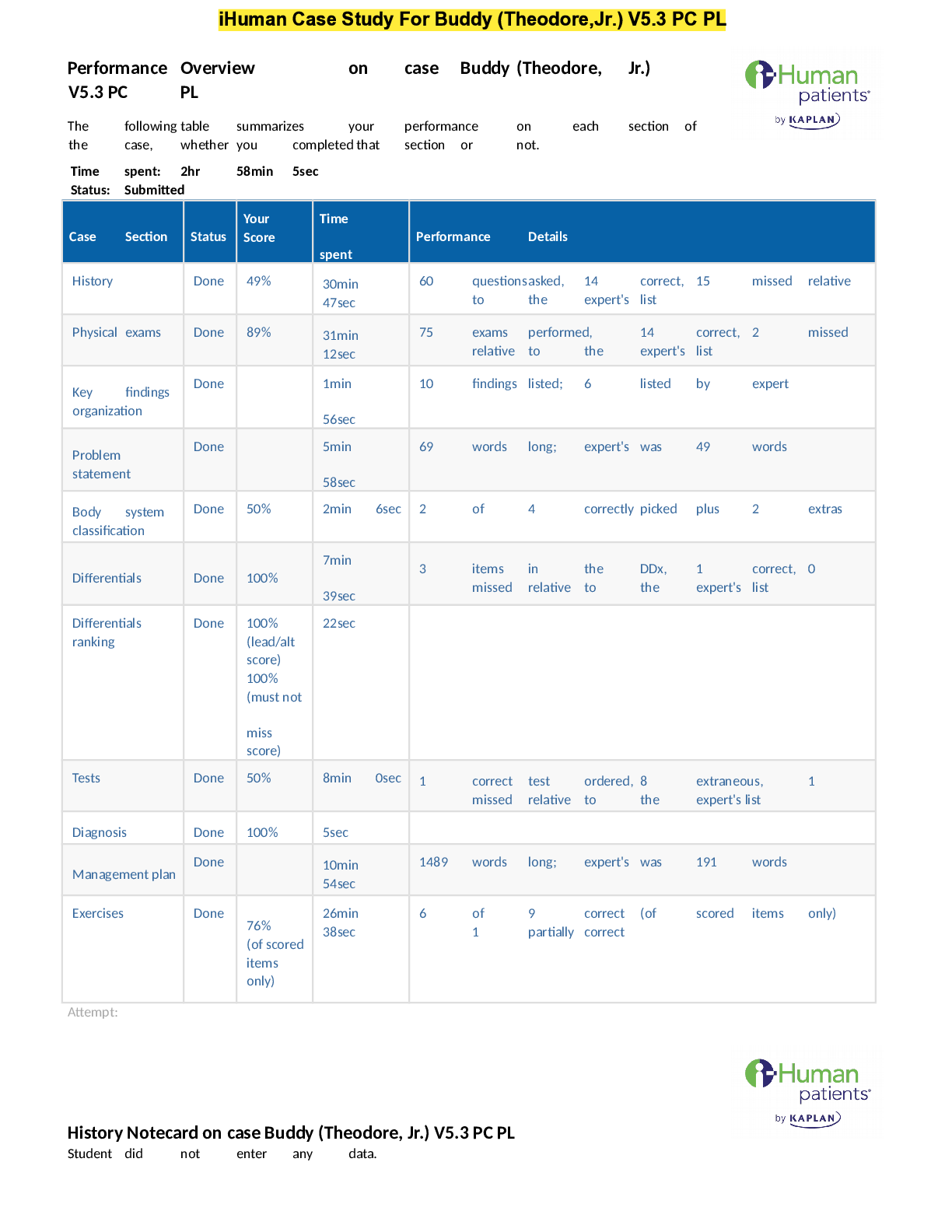
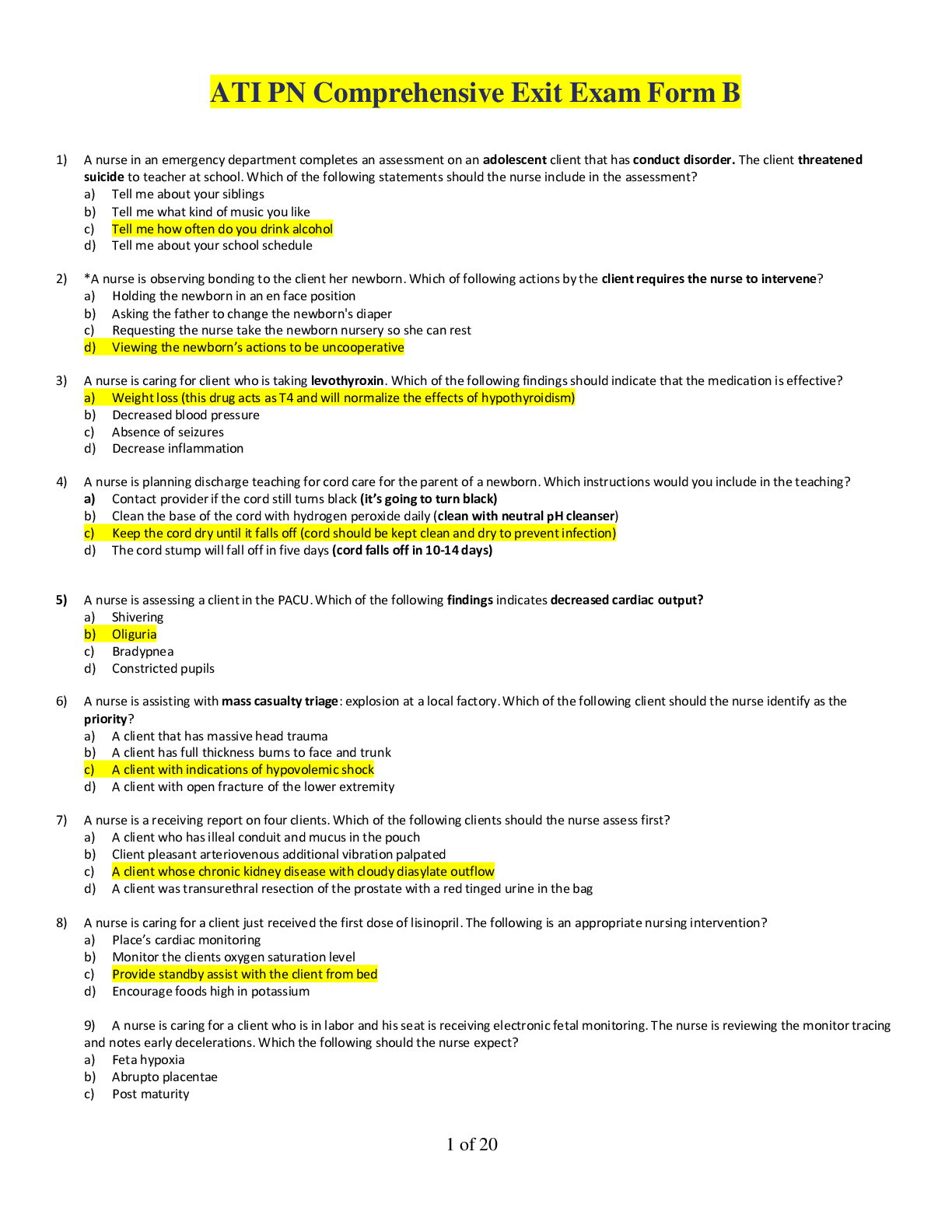
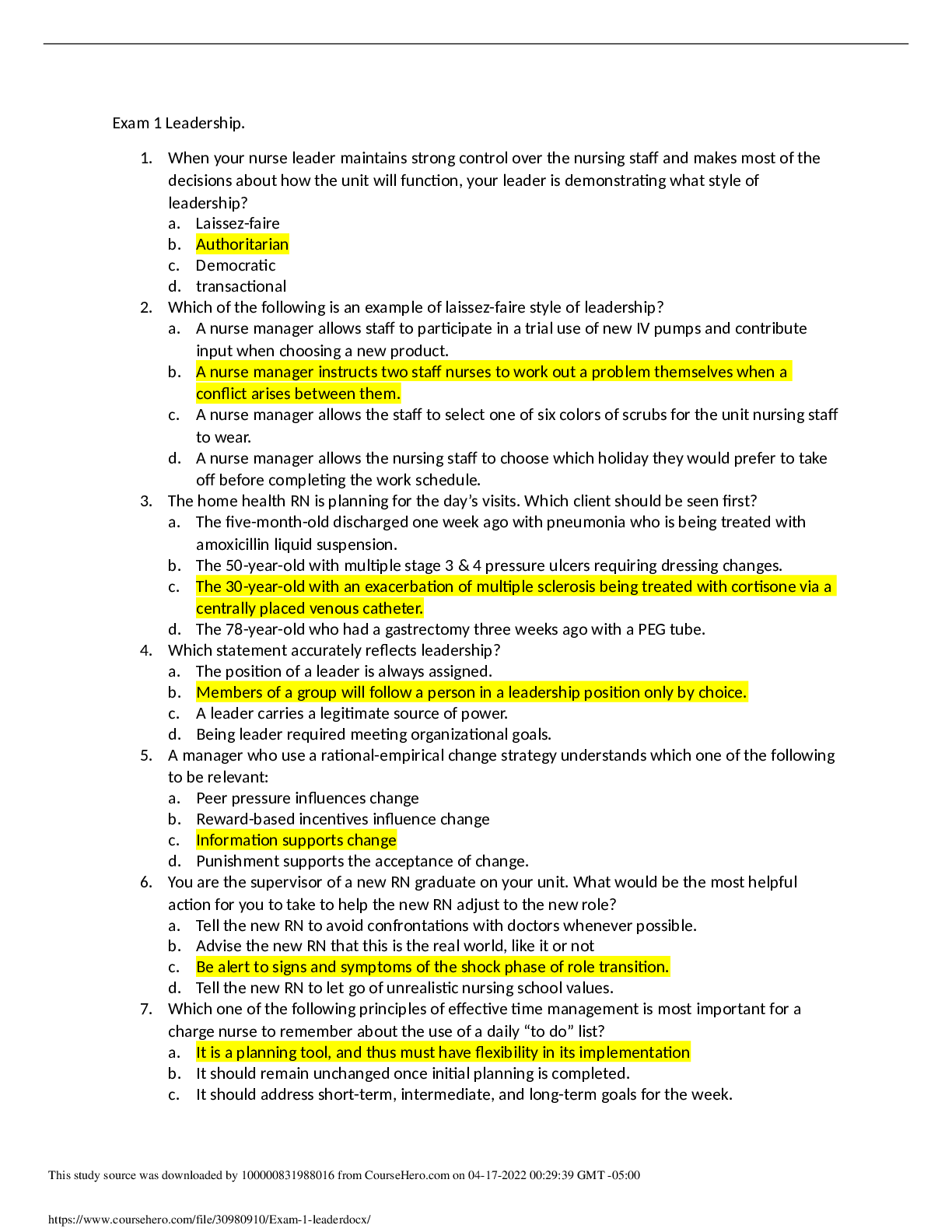


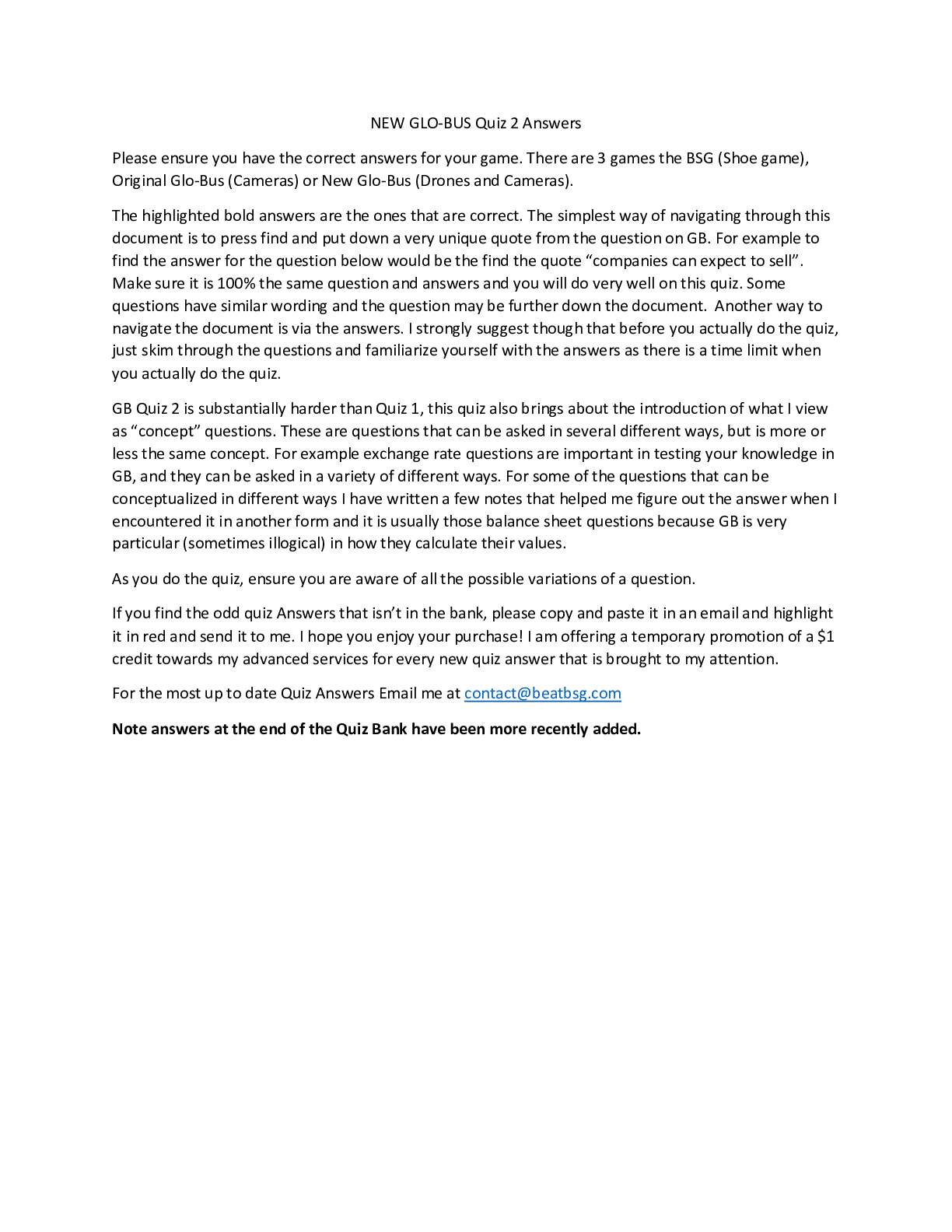
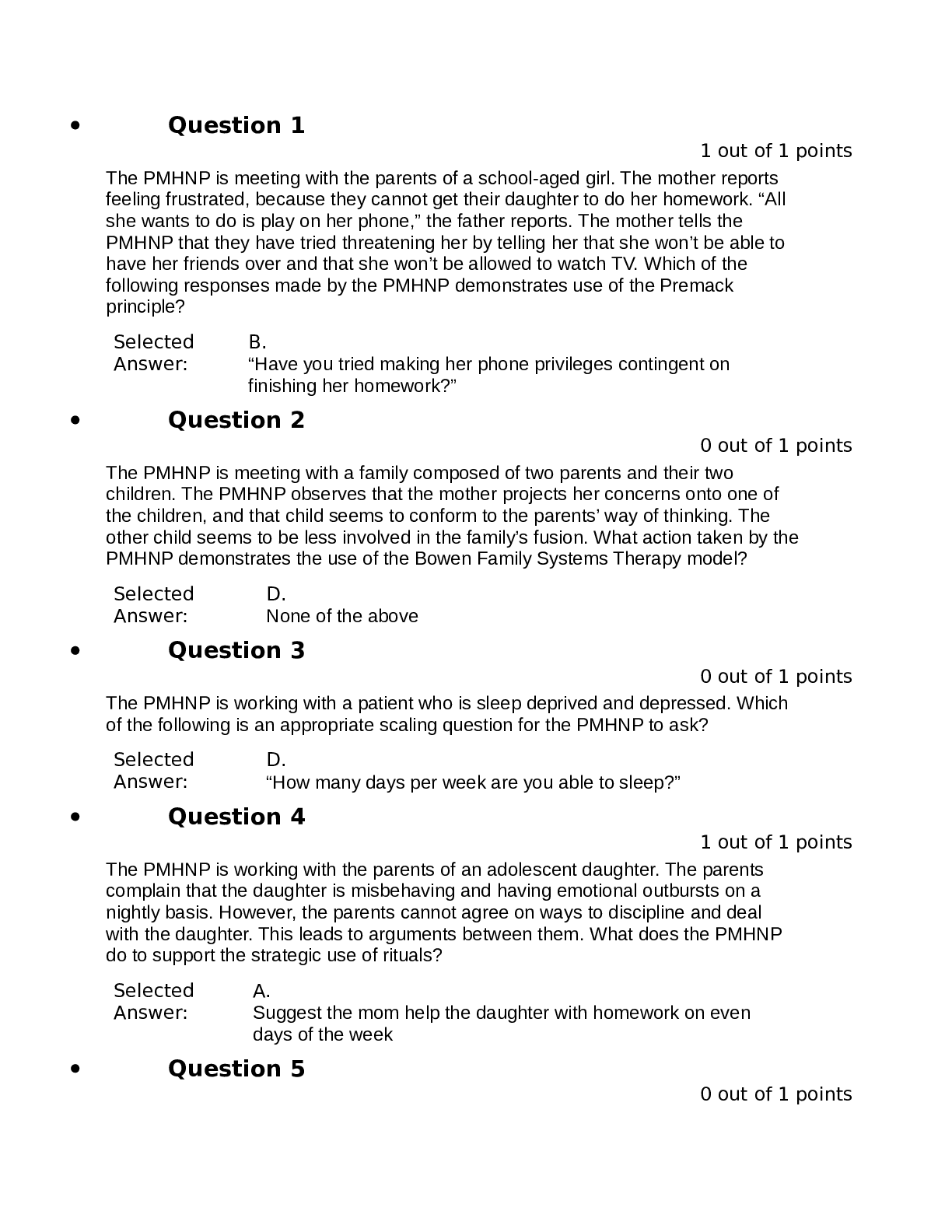
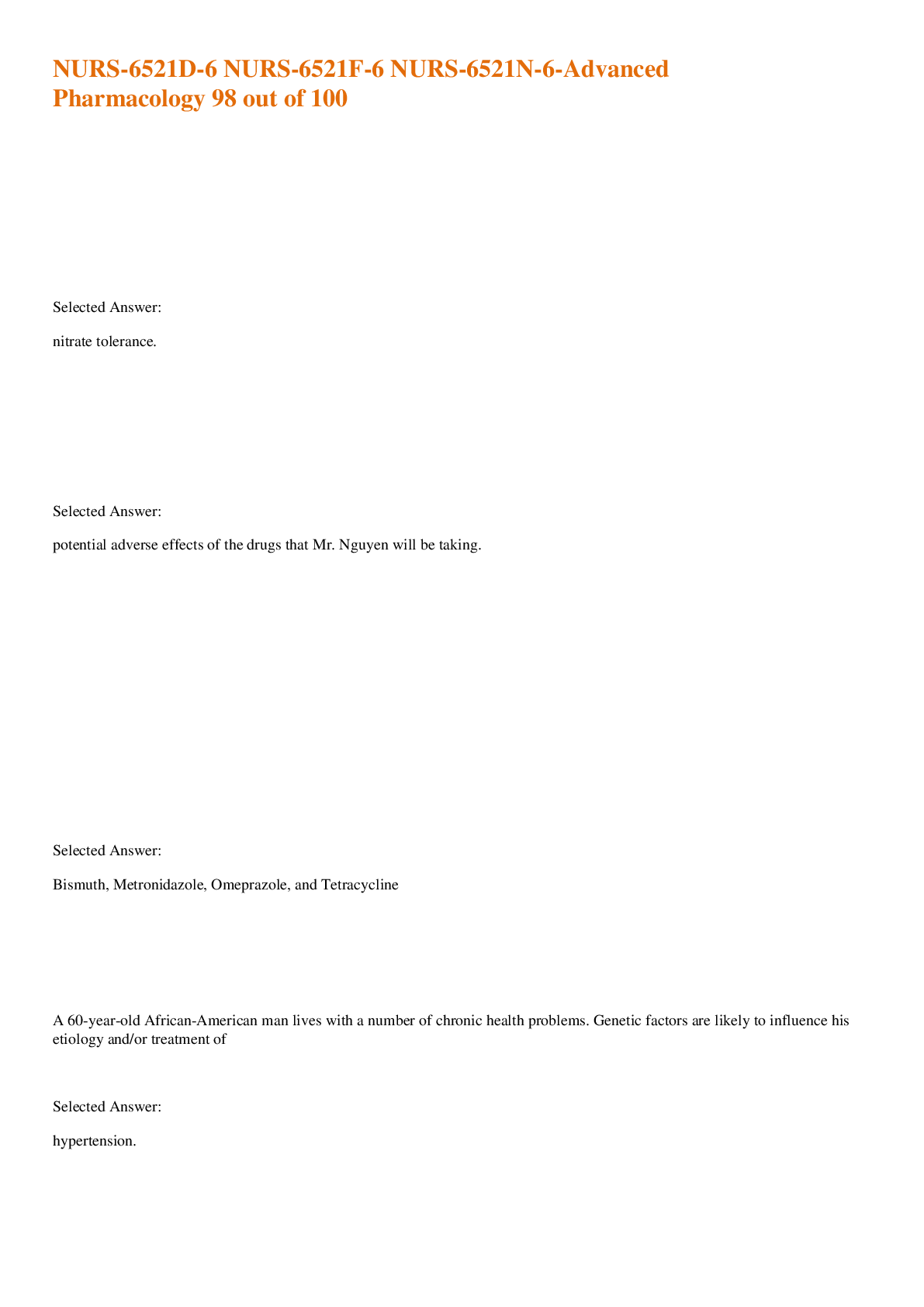
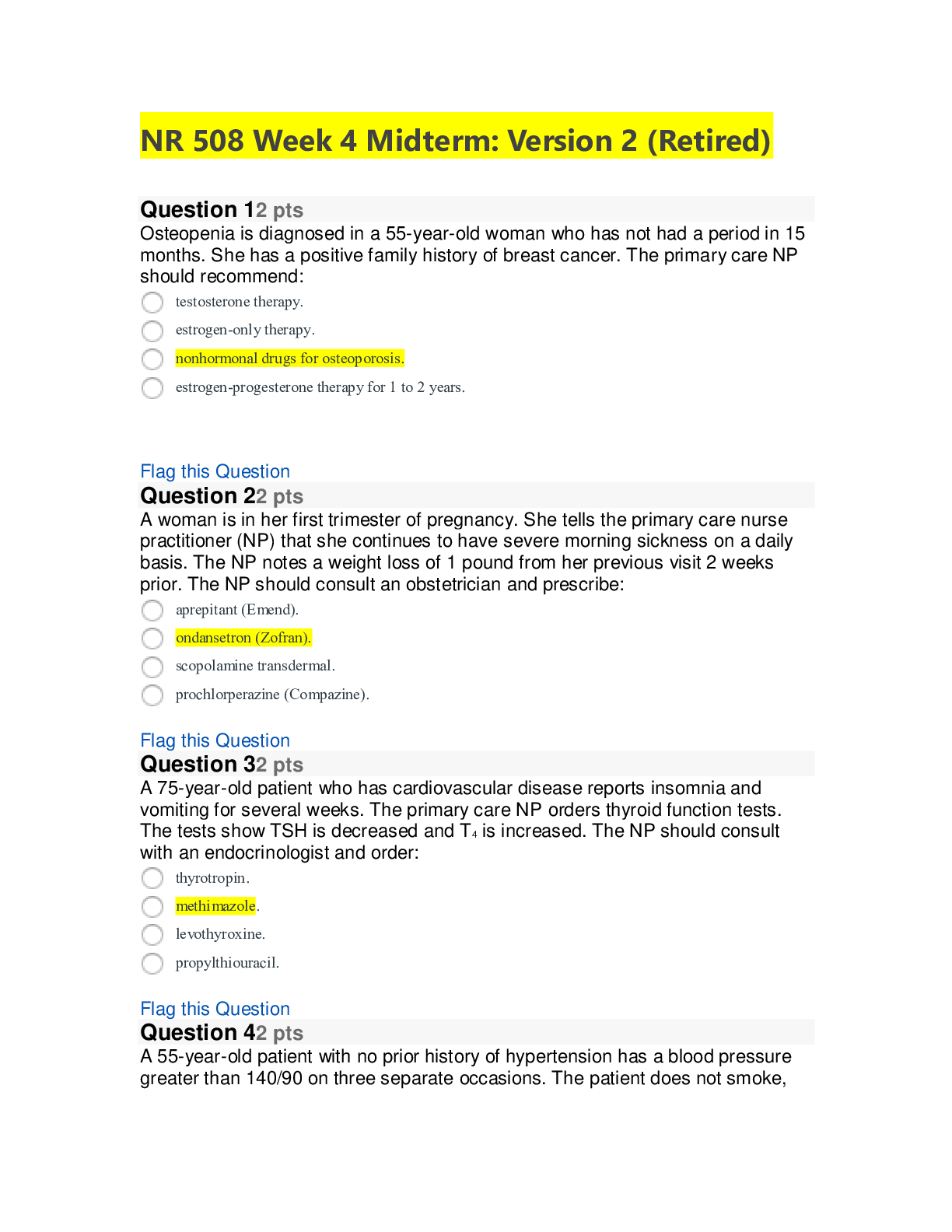



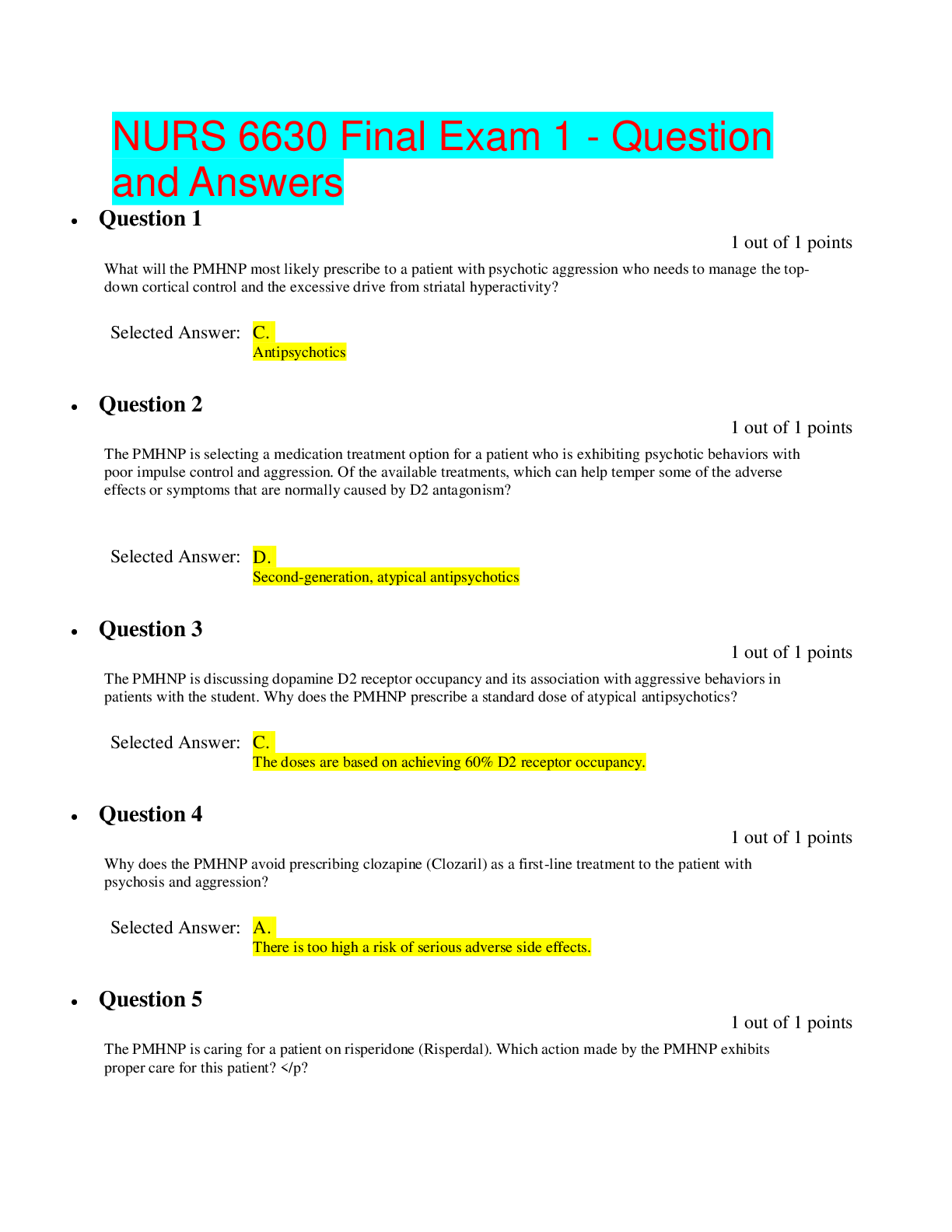


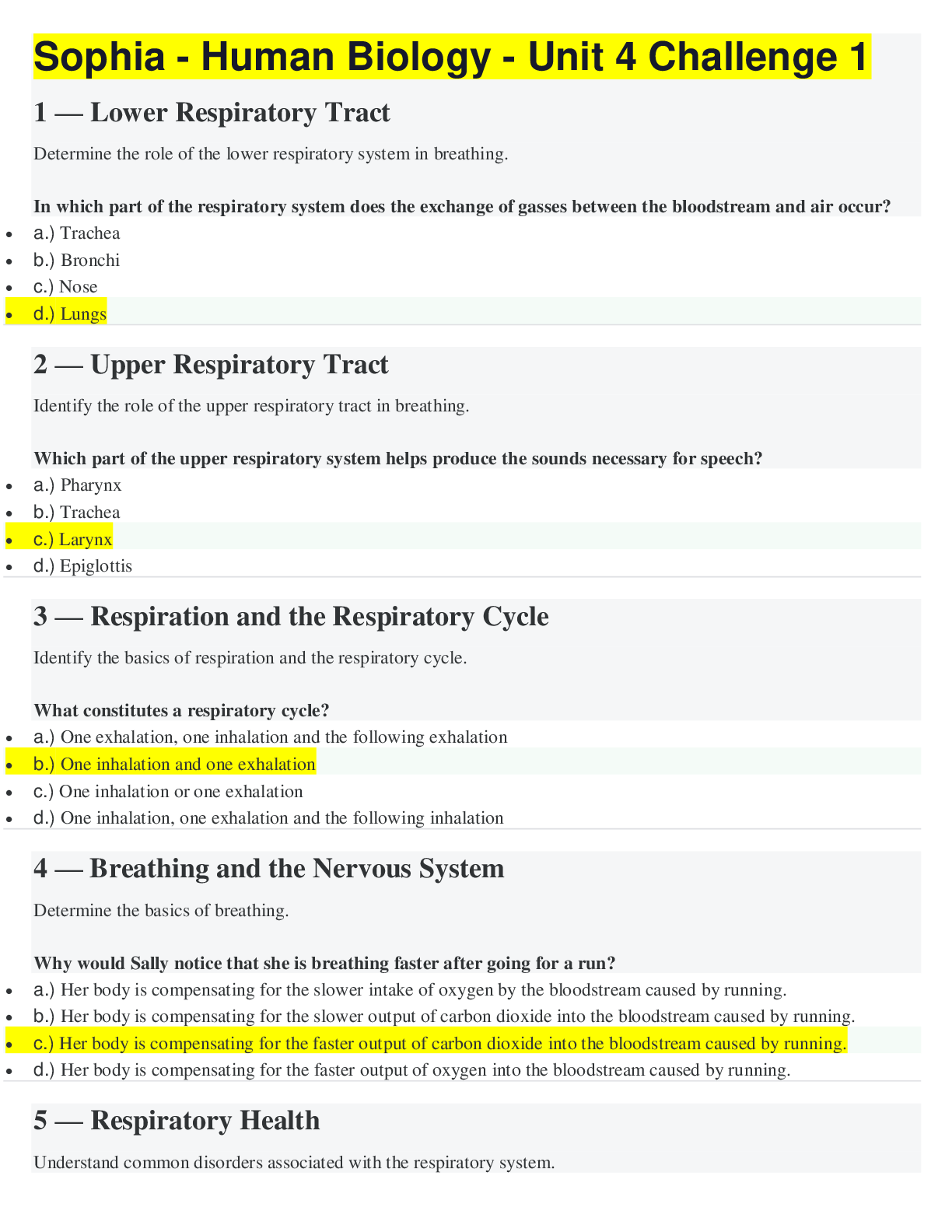

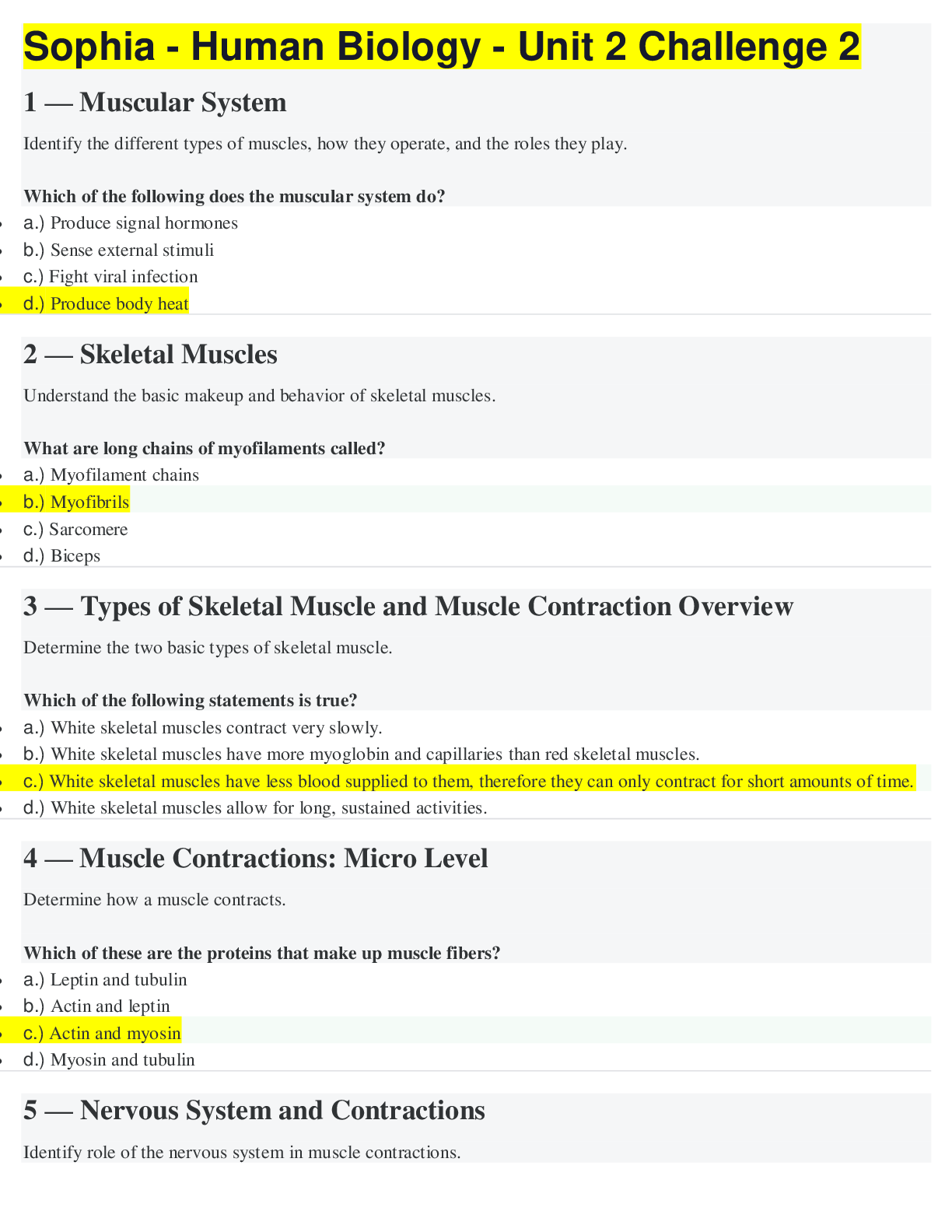
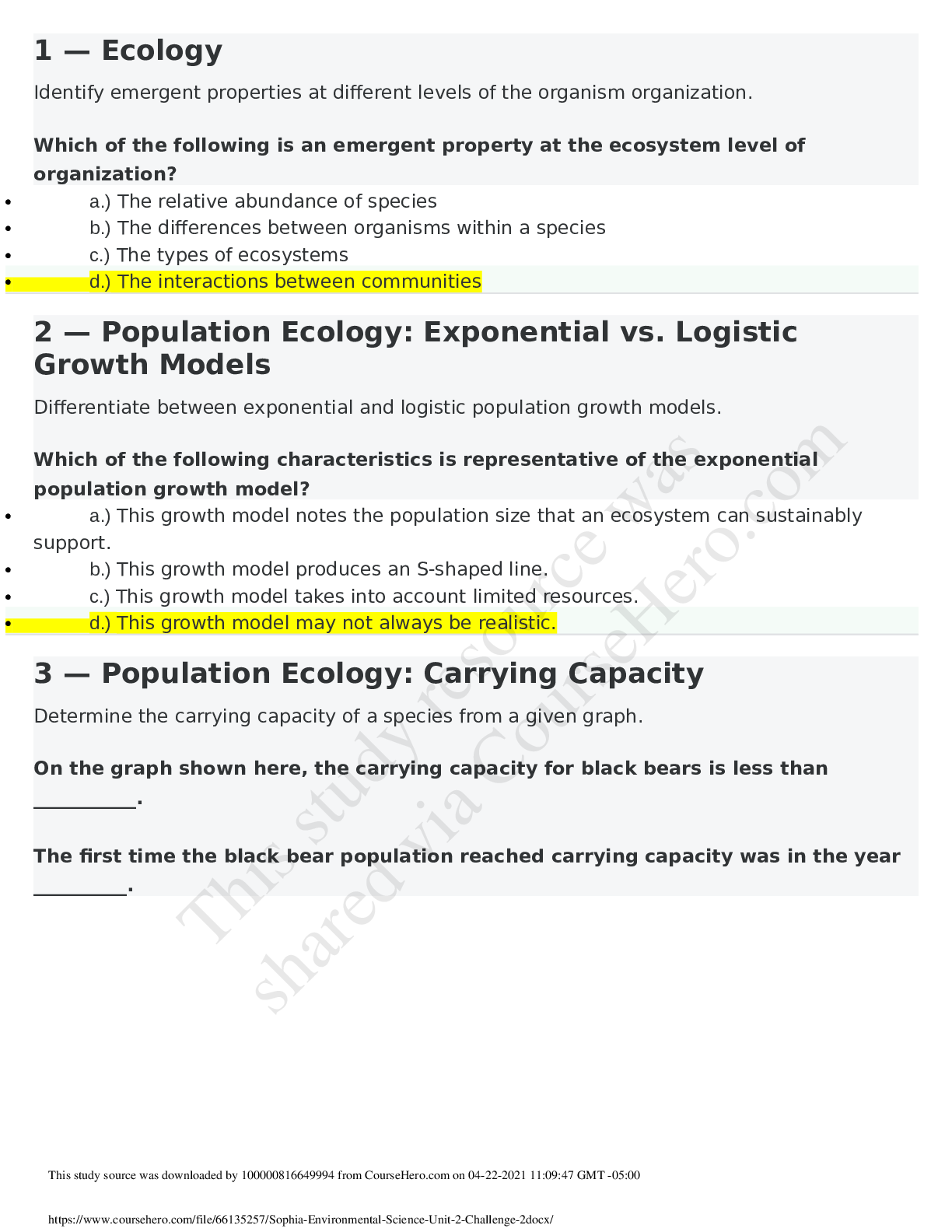

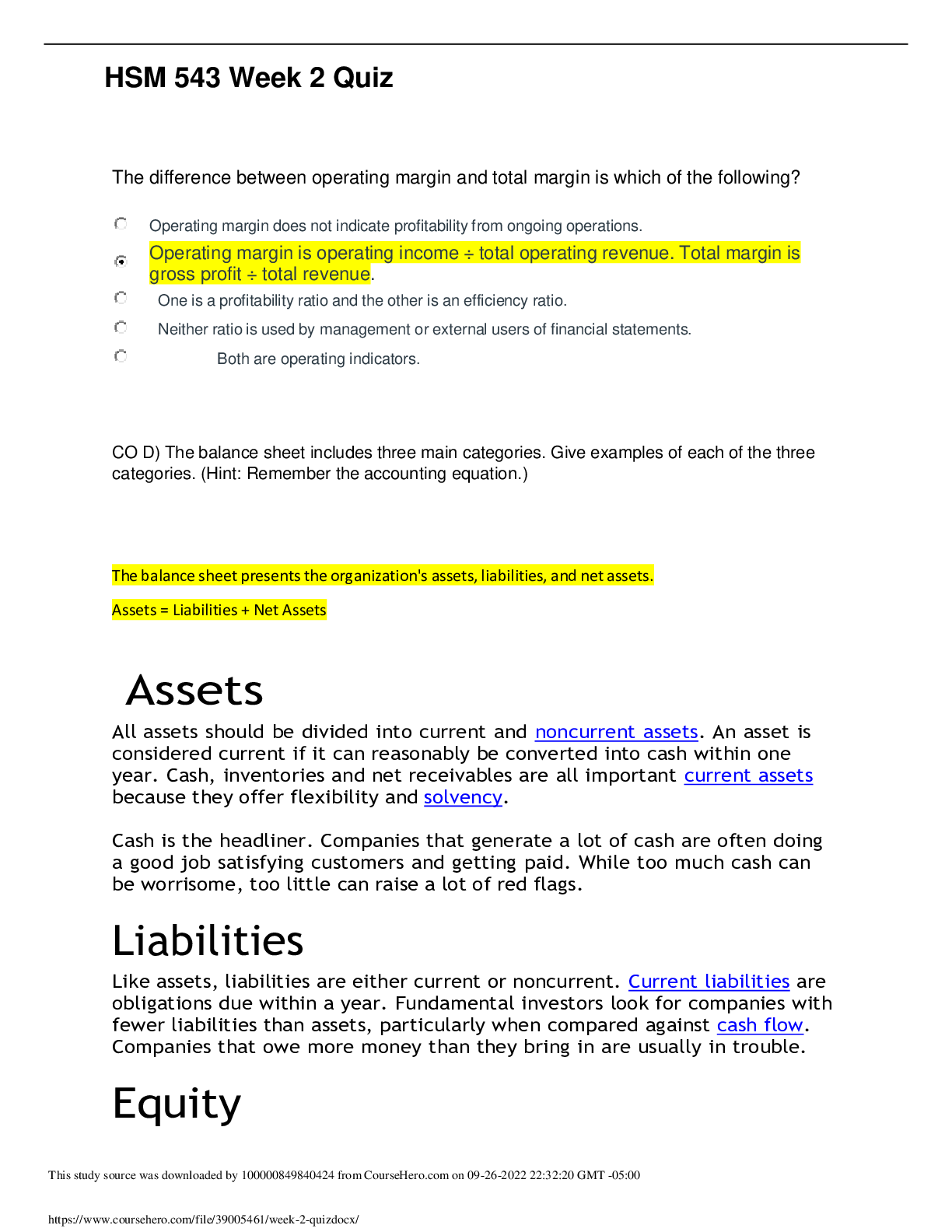
.png)
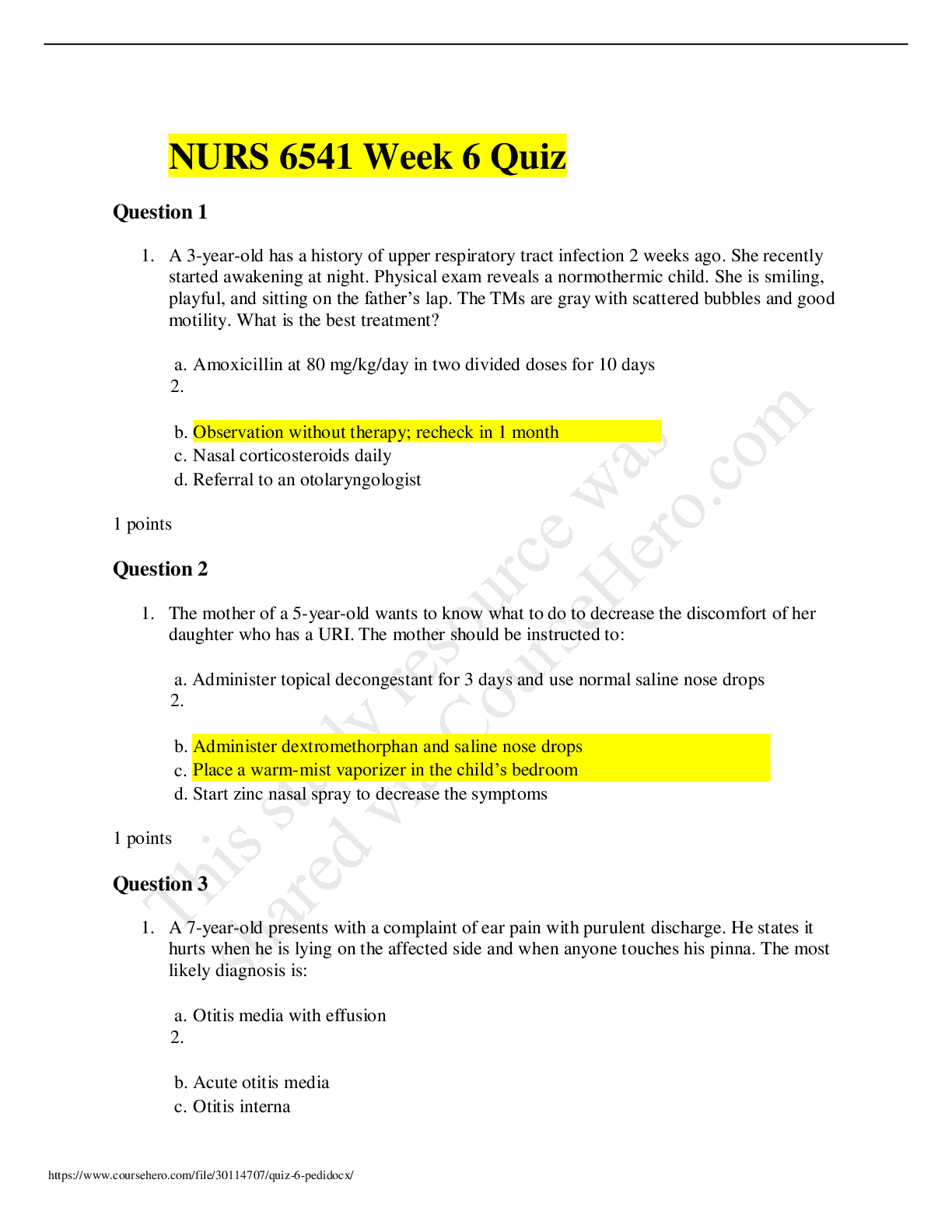
.png)

